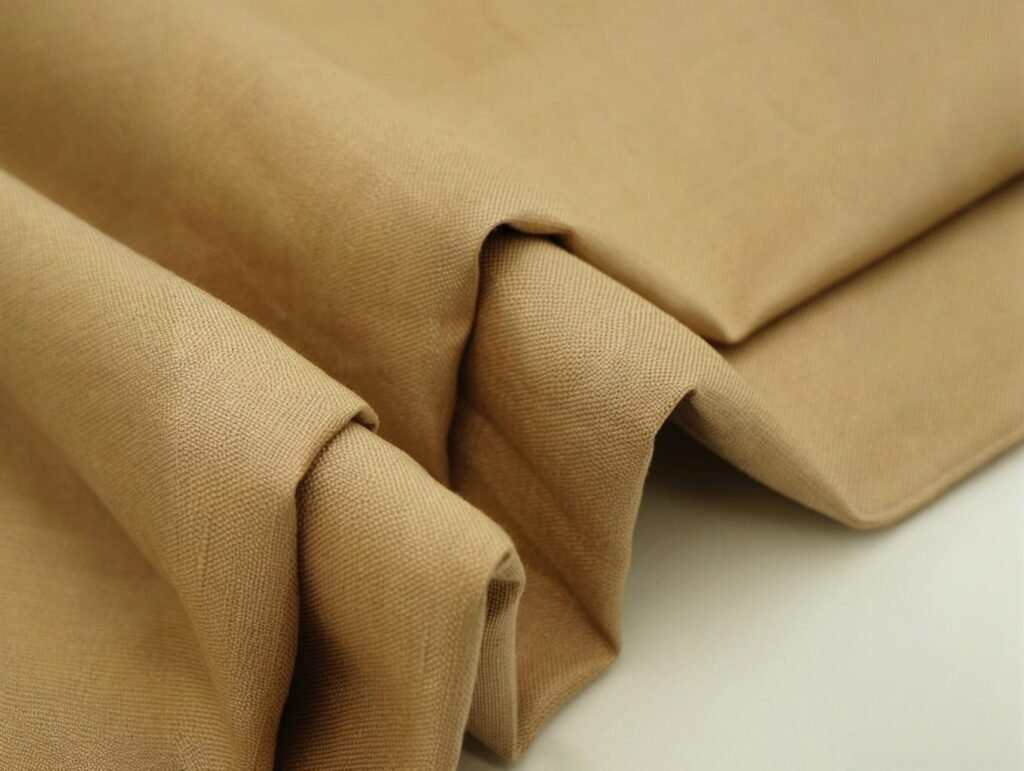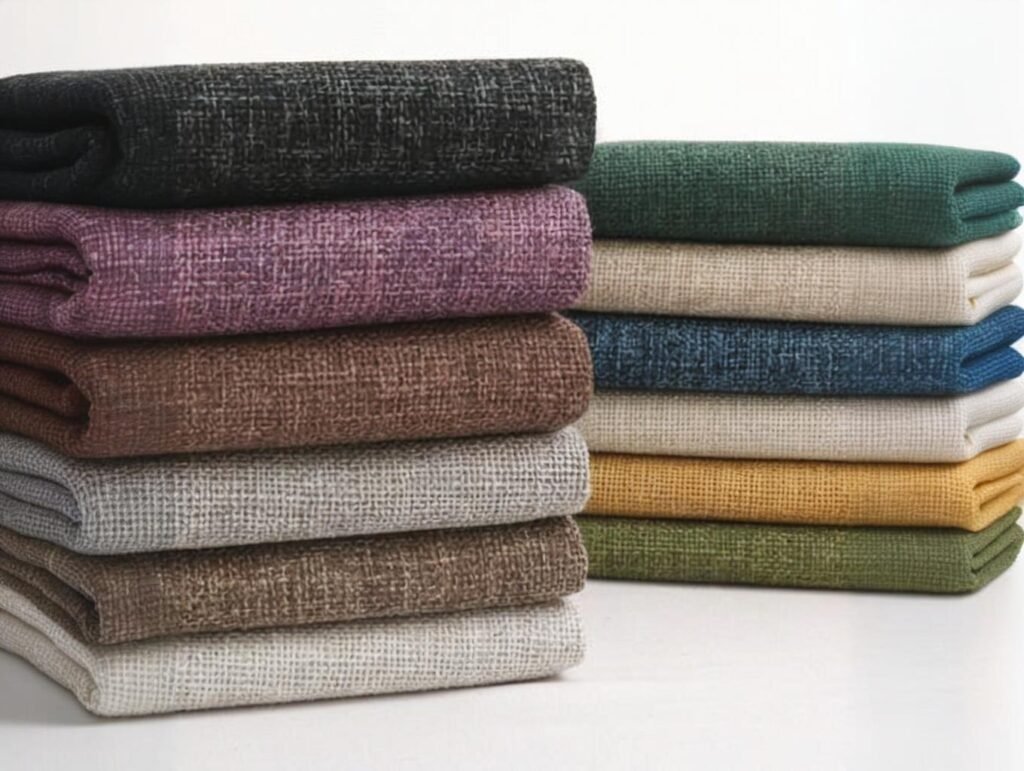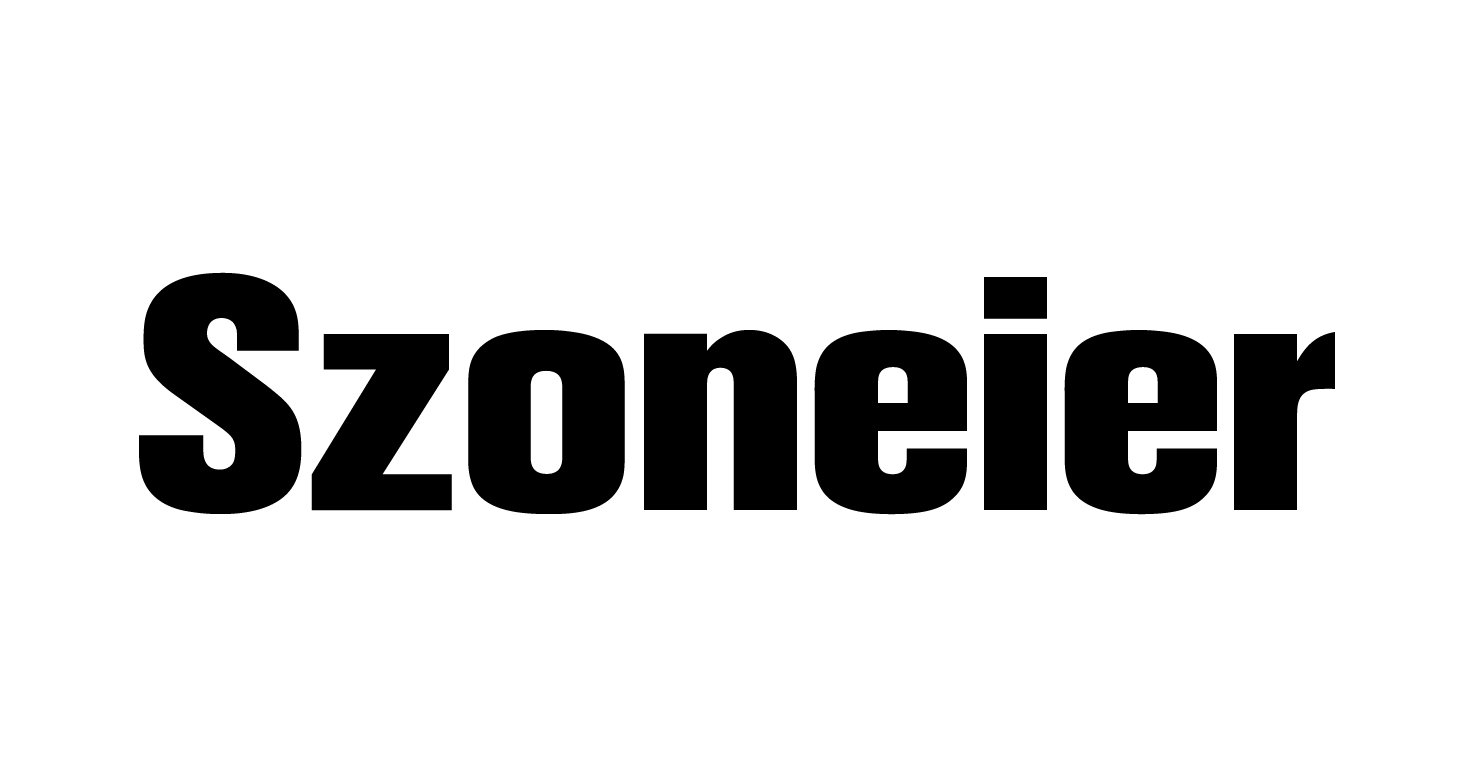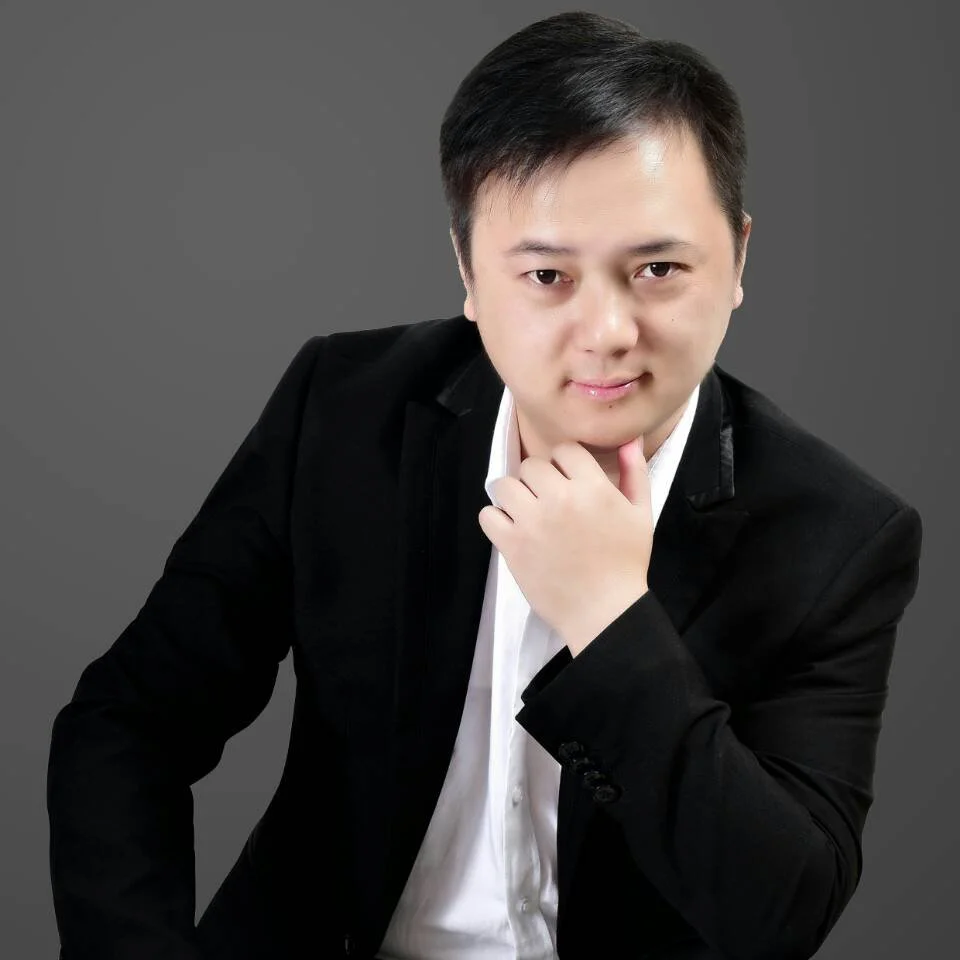When it comes to natural fabrics, few evoke the sense of quality and heritage quite like linen. But not all linen is created equal. Much of the world’s finest flax fiber comes from Europe, and among the top contenders—France, Belgium, and Eastern Europe—each region has its own soil, climate, tradition, and reputation that shape the linen it produces.
French linen is known for finesse and softness, Belgian linen for its legacy and craftsmanship, and Eastern European linen for cost-efficiency and durability—each serving distinct market needs.
Understanding these regional differences is no longer a matter of curiosity—it’s a critical sourcing decision. Whether you’re designing premium apparel, home textiles, or sustainable accessories, the origin of your linen affects everything from price and performance to perception.
Let’s unravel the story of European flax and find out what truly separates these regions—starting with the factors that make linen quality vary in the first place.
What Makes Linen Quality Vary Between France, Belgium, and Eastern Europe?

Linen quality isn’t determined solely by the flax plant—it’s the combination of environmental conditions, harvesting techniques, retting processes, and local textile traditions that impact the final fabric. France, Belgium, and countries like Lithuania, Romania, and Poland all grow flax—but the outcomes differ significantly.
The quality of linen varies between France, Belgium, and Eastern Europe due to differences in climate, soil nutrients, retting techniques, fiber sorting practices, and finishing technology.
Key Variables That Affect Linen Quality by Country
1. Climate and Rainfall
- France (Normandy, Picardy): Temperate oceanic climate with consistent rainfall supports even flax growth.
- Belgium (Flanders): Similar to Northern France but with slightly cooler temps, which slow fiber development—often improving length and strength.
- Eastern Europe (Lithuania, Romania, Belarus): Continental climates with more extreme temperatures lead to faster growth, thicker fibers, and more variation in quality.
2. Soil Composition
- French and Belgian soils are loamy and nutrient-rich, contributing to longer, finer fibers.
- Eastern European regions often rely on more alkaline or sandy soils, which can produce stronger but coarser fibers.
3. Retting Process
- Belgium and France typically use dew retting—a slow, natural process that allows microbial action to separate the fiber from the stalk gently.
- In Eastern Europe, chemical or water retting is sometimes used to speed up production, which can affect fiber texture and ecological impact.
4. Harvesting and Scutching
- Western European regions invest heavily in mechanized scutching and combing processes that protect fiber integrity.
- Eastern producers may still rely on semi-mechanical or manual methods, leading to more variability but often lower costs.
Quality Factor Comparison Table
| Factor | France | Belgium | Eastern Europe |
|---|---|---|---|
| Climate Stability | High | Very High | Moderate |
| Fiber Length | Long | Very Long | Medium |
| Texture | Soft | Silky-Smooth | Coarse to Medium |
| Retting Method | Dew | Dew | Dew / Water / Chemical |
| Consistency | Very Consistent | Premium Consistency | Varies by producer |
| Processing Investment | High | Very High | Moderate to Low |
Case Example: A luxury home brand in Copenhagen reported a 27% reduction in customer returns after switching from Lithuanian linen to certified Belgian flax for its bedding line—attributed to improved softness, better wrinkle resistance, and higher dimensional stability after laundering.
Which Country Produces the Highest Grade Flax for Linen Fabric?
There’s a reason Belgian linen is often considered the gold standard. It’s not just about the fiber—it’s about tradition, traceability, and meticulous quality control. But France is no slouch either. And Eastern Europe is closing the gap with rapid investment in flax processing technology.
Belgium is widely recognized as producing the highest grade flax for linen due to its ideal climate, strict quality regulations, and centuries-old textile heritage. France follows closely, with Eastern Europe gaining ground through innovation and volume production.
Evaluating High-Grade Linen by Origin
1. Belgian Linen: The Global Benchmark
- “Belgian Linen” is not just geographic—it’s a protected label issued by the Belgian Flax and Linen Association (BFLA).
- To qualify, the linen must be woven in Belgium with European-grown flax, meeting strict quality and sustainability guidelines.
- Known for: Ultra-long fibers, minimal imperfections, consistent color, and luxurious hand feel.
2. French Linen: Finesse with Sustainability
- France grows approximately 75% of all European flax, and its exports are often used in finishing or blending by global mills.
- Known for: Fine fibers, soft hand, and organic farming techniques.
- Many French producers focus on low-impact processing to meet EU Green Deal targets.
3. Eastern European Linen: Affordable and Advancing
- Lithuania, Romania, Belarus, and Ukraine have seen a rise in flax cultivation over the past decade, driven by lower labor costs and land availability.
- Known for: Tough, rustic textures; lower pricing; improving certification adoption.
- Some mills now offer GOTS or OEKO-TEX-certified linen, closing the gap with Western Europe.
Premium Linen Origin Comparison
| Feature | Belgian Linen | French Linen | Eastern European Linen |
|---|---|---|---|
| Certification Control | Strong (BFLA, Masters of Linen) | Growing (OEKO-TEX, GOTS) | Improving (Selective mills) |
| Average Fiber Length | 33–36 inches | 30–33 inches | 24–30 inches |
| Premium Retail Pricing | $20–$28/yard | $18–$24/yard | $10–$16/yard |
| Typical Use | High-end fashion, home goods | Apparel, bedding | Bags, apparel basics |
Insight: The world’s top-tier fashion houses—including Hermès and Maison Margiela—prefer Belgian or French-grown flax for their linen garments and accessories, citing both tactile quality and European production transparency.
How Do Climate and Soil Affect Flax Fiber Characteristics in Each Region?

Flax is a particularly sensitive crop—its quality is heavily influenced by the environment in which it grows. Elements such as temperature range, seasonal rainfall, soil drainage, and mineral content all shape the final characteristics of linen fabric. This explains why Belgian and French flax is often softer and finer, while Eastern European flax tends to be coarser and stronger.
The climate and soil conditions of each region—France, Belgium, and Eastern Europe—play a major role in determining the strength, softness, and consistency of flax fibers used in linen production.
Environmental Factors by Region
1. France: Mild Oceanic Climate + Loamy Soil
- Regions like Normandy and Picardy experience moderate temperatures and consistent rainfall throughout the flax growth season (April to July).
- Loamy soils with good drainage and balanced pH enable even plant development and longer, finer fibers.
- Cool spring nights prevent over-maturity, leading to optimal fiber density.
2. Belgium: High-Humidity, Slow-Growth Zone
- Flanders is famed for its slow-flaxing season, where cooler coastal temperatures prolong fiber maturation, allowing cells to elongate without becoming brittle.
- Soil is rich in calcium and humus, helping produce silkier fibers with minimal blemishes.
- Combined with expertise in dew-retting, Belgium’s environment creates exceptionally high luster in raw fiber.
3. Eastern Europe: Variable Climate and Mineral-Rich Soils
- Lithuania, Romania, and Ukraine experience continental climates with wide temperature swings.
- These regions are suited for hardier flax varieties that yield thicker, shorter fibers, great for durable but less refined linen.
- Sandy or clay-heavy soils in certain zones affect fiber quality unless carefully rotated and conditioned.
Flax Growth Conditions Comparison
| Region | Avg. Temp (°C during growth) | Avg. Rainfall (mm) | Soil Type | Fiber Outcome |
|---|---|---|---|---|
| France (Normandy) | 14–18°C | 600–750 mm | Loam-rich | Long, soft, consistent |
| Belgium (Flanders) | 13–16°C | 700–800 mm | Humus-rich loam | Longest, most lustrous |
| Eastern Europe | 16–22°C | 450–600 mm | Mixed mineral types | Coarser, high-tenacity |
Humanized Insight: A Lithuanian flax grower explained that while their climate allows faster harvesting and more yield per hectare, the fibers “tend to be stronger and rougher”—ideal for durable applications like workwear or home textiles that need structure.
Critical Takeaway: Climate isn’t just a farming consideration—it’s a fabric story. Buyers seeking luxury softness or garment-grade drape should lean toward flax grown in France and Belgium. Those focused on durability or cost-efficiency may find value in responsibly sourced Eastern European linen.
What Are the Differences in Processing Techniques Across These Countries?
After flax is harvested, it undergoes a complex journey from stalk to finished yarn. The methods used in retting, scutching, combing, spinning, and finishing vary widely between Belgium, France, and Eastern Europe—and these differences directly influence linen’s texture, purity, and strength.
Belgium and France use highly refined and often automated linen processing techniques that result in smoother, cleaner fibers, while Eastern European countries rely more on traditional or semi-mechanical processes that produce a more rustic aesthetic.
Key Processing Stages and Regional Practices
1. Retting Methods
- Dew Retting (Belgium, France): Involves laying flax in fields to decompose naturally via environmental exposure. This method preserves fiber integrity and is more eco-friendly.
- Water Retting (Eastern Europe): Uses submersion in tanks or streams to break down pectin quickly. This can speed up production but may affect fabric softness or create inconsistent batches.
- Chemical Retting (industrial sectors in Eastern Europe): Speeds up production using alkalis or enzymes but raises environmental concerns unless wastewater is treated.
2. Scutching and Combing
- Belgium & France: Use automated scutching lines that apply consistent pressure and reduce fiber breakage. Combing yields long, aligned fibers perfect for high-grade spinning.
- Eastern Europe: Often use semi-mechanical scutching, leading to slightly shorter staple fibers, more residual chaff, and a thicker final yarn.
3. Spinning and Finishing
- French and Belgian mills often use wet spinning, producing finer, smoother yarns.
- Eastern mills may use dry spinning, which retains a coarser hand feel but improves tensile strength.
- Finishing methods in the West include enzyme washing, calendaring, and natural dyeing, whereas Eastern mills focus on utility-focused finishes like stiffening or reactive dyeing.
Processing Method Comparison
| Step | Belgium | France | Eastern Europe |
|---|---|---|---|
| Retting | Dew retting (slow, natural) | Dew retting (selective) | Dew/water/chemical (varies) |
| Scutching | Fully automated | Semi to fully automated | Semi-mechanical |
| Combing | Fine, multi-stage combing | Moderate combing | Single-pass or manual combing |
| Spinning | Wet spinning (fine yarn) | Wet or semi-wet | Dry spinning (stronger yarn) |
| Final Finish | Enzyme, soft wash, natural | Enzyme or calendared | Heat set, utility dye finish |
Case Study: A Canadian design studio sourcing from both France and Romania reported that French-processed linen yielded 18% fewer weaving defects, but the Romanian fabric was nearly 40% less expensive per linear meter—a crucial balance point for cost-driven product lines.
Takeaway for Buyers: If you prioritize refined aesthetics and minimal flaws, choose mills in France or Belgium. If you’re seeking economical but durable linen for rustic styles, Eastern European sources offer better cost-to-performance ratios—especially when combined with post-processing.
Is Belgian Linen Always Better Than French or Eastern European Linen?

“Belgian Linen” often carries a luxury reputation—and rightfully so. It is frequently associated with ultra-high quality, impeccable weaving, and legacy craftsmanship. But when it comes to real-world textile use, the question isn’t simply about better or worse—it’s about fit for purpose.
Belgian linen is often the most refined and consistent option available, but that doesn’t mean it’s always the best choice for every use case. French linen offers similar softness and better sourcing flexibility, while Eastern European linen provides excellent value and durability for cost-sensitive or rustic-style applications.
Evaluating the “Best” Based on Use Case
1. Softness and Aesthetic Quality
- Belgian Linen: Wins in smoothness, even weave, and refined drape.
- French Linen: Slightly less consistent than Belgian but still luxurious, with a more natural finish.
- Eastern European Linen: More textured; appeals to rustic and handmade aesthetics.
2. Technical Consistency
- Belgian mills are known for tight quality control, which reduces weaving and dyeing defects.
- French linen producers also deliver high standards, especially in certified organic programs.
- Eastern producers are more variable, but improving rapidly, especially in countries like Lithuania and Poland.
3. Branding and Storytelling
- Belgian Linen carries the Masters of Linen® label—a marketing asset for premium home and fashion brands.
- French linen has strong ties to sustainable agriculture and regional terroir, which appeals to eco-conscious consumers.
- Eastern European linen appeals to buyers who value traditional craftsmanship or raw, untreated aesthetics.
Performance Scorecard (Subjective Summary by Attribute)
| Attribute | Belgian Linen | French Linen | Eastern European Linen |
|---|---|---|---|
| Softness | ★★★★★ | ★★★★☆ | ★★☆☆☆ |
| Durability | ★★★★☆ | ★★★★☆ | ★★★★★ |
| Color Consistency | ★★★★★ | ★★★★☆ | ★★★☆☆ |
| Fabric Drape | ★★★★★ | ★★★★☆ | ★★★☆☆ |
| Brand Prestige | ★★★★★ | ★★★★☆ | ★★★☆☆ |
| Cost Efficiency | ★★☆☆☆ | ★★★☆☆ | ★★★★★ |
Real-World Perspective: A Brooklyn-based interior brand switched from French to Belgian linen for its curtain line and saw a 15% rise in customer satisfaction related to feel and finish. But when launching an artisanal kitchen towel range, they chose Lithuanian linen for its earthy aesthetic and lower price—achieving 2x profit margins per unit.
Conclusion: “Best” depends entirely on the context. For premium labels with an emphasis on finesse, Belgian linen leads. For ethical sourcing with natural softness, French linen wins. For value-driven products with strength, Eastern European linen is the smart pick.
How Does Eastern European Linen Compete on Price and Sustainability?
Eastern European countries like Lithuania, Romania, and Ukraine are no longer just secondary sources for budget linen—they’re fast becoming leaders in cost-efficient, semi-sustainable flax production. While historically viewed as “less refined,” Eastern European linen is gaining credibility thanks to better farming practices, certification programs, and modernized mills.
Eastern European linen competes on both price and sustainability by offering lower production costs, increasing adoption of eco-friendly certifications, and leveraging local flax cultivation to reduce supply chain emissions.
Key Competitive Advantages of Eastern European Linen
1. Price Advantage
- Labor and land costs in countries like Romania or Ukraine are significantly lower than in France or Belgium.
- Proximity to flax fields reduces logistics overhead and dependency on imports.
- Many Eastern mills offer finished fabrics at 30–50% lower cost per yard than Western European counterparts.
| Region | Avg. Finished Linen Price (USD/yard) |
|---|---|
| Belgium | $20–$28 |
| France | $18–$24 |
| Lithuania | $10–$15 |
| Romania | $9–$13 |
| Ukraine | $8–$12 |
2. Sustainability Gains
- Flax naturally grows well in these regions with minimal pesticide and water input, even without strict EU subsidies.
- Mills are increasingly seeking GOTS, OEKO-TEX®, and Masters of Linen® certifications to align with global eco standards.
- Shorter regional supply chains reduce emissions tied to transport and energy costs.
3. Versatility and Customizability
- Many Eastern European factories offer custom dyeing, loom state fabric, and varying GSMs on demand—ideal for smaller runs or test collections.
- Their flexibility in MOQ and finishing options makes them ideal partners for emerging designers or mid-range brands.
4. Local Traditions with Modern Tech
- Textile hubs in Lithuania and Romania are blending generations-old weaving traditions with modern looms and digital dyeing.
- Government support for textile exports has also fueled better compliance and training.
Case Study: An eco-focused homeware brand in Australia transitioned from Belgian to Lithuanian linen for its napkin and placemat line. The switch reduced per-unit costs by 38% while maintaining OEKO-TEX® compliance. Customers embraced the slightly rougher texture as “authentically handmade.”
Caveat for Buyers: While cost is a clear advantage, not all Eastern European suppliers are equal. It’s crucial to verify certifications and inspect samples thoroughly—particularly for consistency, shrinkage rates, and fiber alignment.
What Certifications and Standards Are Used to Judge Linen Quality?

When evaluating linen from France, Belgium, or Eastern Europe, quality isn’t just about how the fabric feels—it’s also about how it’s produced, tested, and validated. Certifications act as a safeguard, ensuring that linen meets health, environmental, and performance standards. For international buyers, these marks are essential for product credibility and regulatory compliance.
The most widely accepted certifications for linen fabric include OEKO-TEX® Standard 100, GOTS, Masters of Linen®, and ISO textile standards—each verifying safety, sustainability, and fiber authenticity.
Key Linen Certifications and What They Mean
1. OEKO-TEX® Standard 100
- Ensures the fabric is free from harmful substances (e.g., formaldehyde, heavy metals).
- Applies to all regions but particularly common in French and Eastern European linen.
- Required by many European and North American retailers.
2. GOTS (Global Organic Textile Standard)
- Applies to linen made from organically grown flax.
- Guarantees no synthetic pesticides, sustainable processing, and fair labor.
- Eastern Europe is rapidly adopting GOTS standards to reach eco-conscious markets.
3. Masters of Linen® (EU)
- Issued by the European Confederation of Flax and Hemp.
- Confirms that linen is 100% European grown, spun, and woven—common among Belgian and French mills.
- Highly valued in premium markets and for traceability audits.
4. Belgian Linen™ Label
- Controlled by the Belgian Flax and Linen Association (BFLA).
- Certifies that linen is woven in Belgium and meets strict craftsmanship standards.
- Often featured on luxury home textile brands.
5. ISO and EN Testing Standards
- ISO 105 (color fastness), ISO 13934 (tensile strength), ISO 6330 (wash durability), and EN 13432 (compostability) are used to validate fabric performance.
- Buyers should ask for technical datasheets showing compliance with relevant tests.
| Certification | Verifies | Region Most Common | Buyer Benefit |
|---|---|---|---|
| OEKO-TEX® Standard 100 | Chemical safety | France, Eastern Europe | Skin-friendly, market-accepted |
| GOTS | Organic cultivation + processing | France, Lithuania, Romania | Sustainable branding, ethical sourcing |
| Masters of Linen® | European origin and processing | Belgium, France | Traceability, EU compliance |
| Belgian Linen™ | Premium Belgian production | Belgium only | Luxury positioning, high-end assurance |
| ISO Textile Tests | Durability, shrinkage, strength | All | Technical quality benchmarking |
Case Insight: A U.S. fashion startup was denied entry into a major European department store due to lack of GOTS and OEKO-TEX® certificates for its Romanian-sourced linen. After switching to certified suppliers, they were able to re-launch and secure shelf space within two quarters.
Pro Tip for Buyers: Always request certification numbers and documents—not just logos on websites. Reliable suppliers like SzoneierFabrics will provide full compliance packages for every fabric line.
How Should Buyers Choose the Right Country of Origin for Linen Sourcing?
Choosing the best linen origin depends not only on quality preferences but also on your brand identity, market expectations, budget, and sustainability priorities. No one region is inherently better for all products. The smartest sourcing strategy is aligned with your end use.
Buyers should choose their linen’s country of origin based on fabric performance needs, storytelling value, budget tolerance, and required certifications. Often, a blend of sourcing regions is optimal for balancing price, quality, and brand positioning.
Strategic Decision-Making Criteria
1. Define Your Product Application
- Luxury bedding or fashion? → Belgium or France for maximum softness and consumer recognition.
- Rustic home textiles or utility apparel? → Eastern Europe for texture and affordability.
2. Consider Certification Requirements
- Selling in EU markets? → Require GOTS, OEKO-TEX®, and REACH compliance.
- Selling in North America? → Look for OEKO-TEX® and Masters of Linen® for high-end products.
3. Assess MOQ, Lead Time, and Customization Needs
- Western Europe (France/Belgium): High-end, longer lead times, higher MOQs.
- Eastern Europe: Faster response time, smaller MOQs, more flexible finishing options.
4. Budget Realistically
| Linen Origin | Avg. Cost per Yard (Finished) | Ideal For |
|---|---|---|
| Belgium | $22–$28 | Luxury home goods, fashion |
| France | $18–$24 | Mid-to-premium apparel and bedding |
| Lithuania/Romania | $10–$16 | Volume-driven, textured products |
5. Source for Storytelling Value
- Belgian Linen™ signals heritage and excellence—powerful for branding.
- French Organic Linen resonates with sustainability narratives.
- Eastern European Linen aligns with local craftsmanship and rustic authenticity.
Final Checklist Before Choosing a Supplier:
- ✔ Does the fabric meet your performance and feel requirements?
- ✔ Is the origin traceable and certified?
- ✔ Does the supplier provide test reports and swatch samples?
- ✔ Can the mill meet your MOQ and timeline?
Real-World Strategy: A Berlin-based apparel brand sources Belgian linen for capsule collections, French linen for their core products, and Romanian linen for accessories and trial runs—allowing them to balance storytelling with cost-efficiency.
Choosing the right linen fabric means understanding the full story behind the fiber—from soil and sun to spinning and certification. Whether you’re after the legendary softness of Belgian linen, the organic finesse of French flax, or the rugged charm and affordability of Eastern European sources, each origin brings something distinct to the table.
By aligning your product goals with regional strengths, you’ll not only elevate fabric quality but also tell a richer, more authentic story to your customers.
Partner with SzoneierFabrics to Source High-Quality Linen from France, Belgium, and Eastern Europe
At SzoneierFabrics, we offer a curated selection of certified linen fabrics from top European regions. Whether you’re developing luxury bedding, premium fashion, or sustainable homeware, we help you:
- Choose the right flax origin
- Customize GSM, texture, and blends
- Navigate certifications like GOTS, OEKO-TEX®, and REACH
- Access low MOQs and fast sampling
Contact SzoneierFabrics today to request swatches, compliance reports, or a custom quotation for your linen project.

